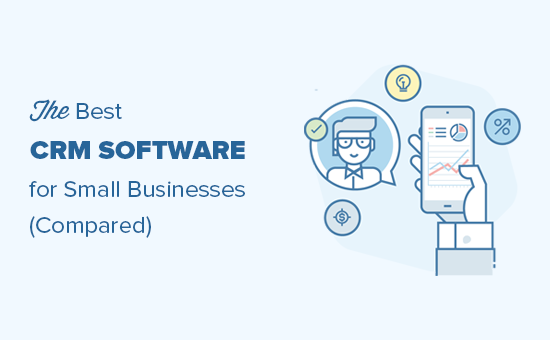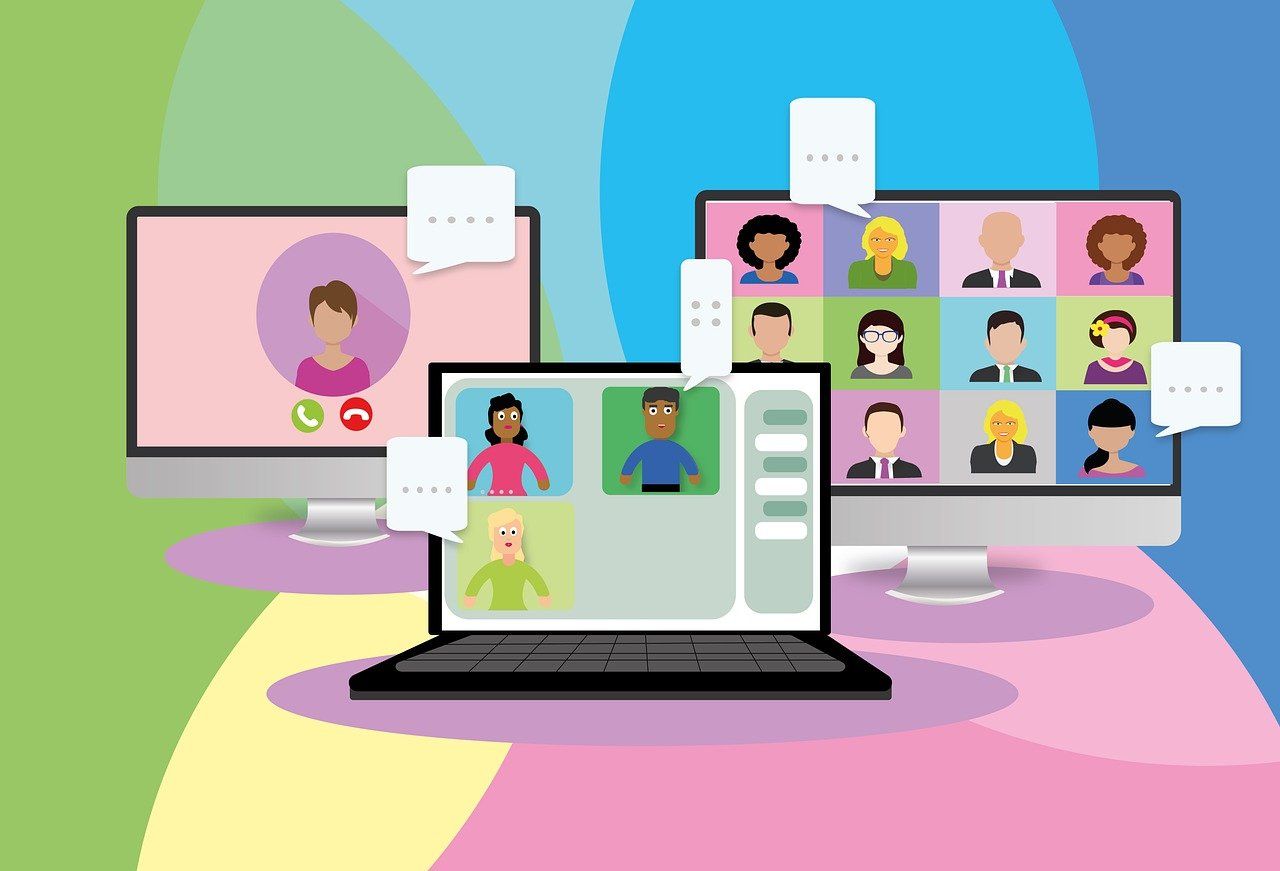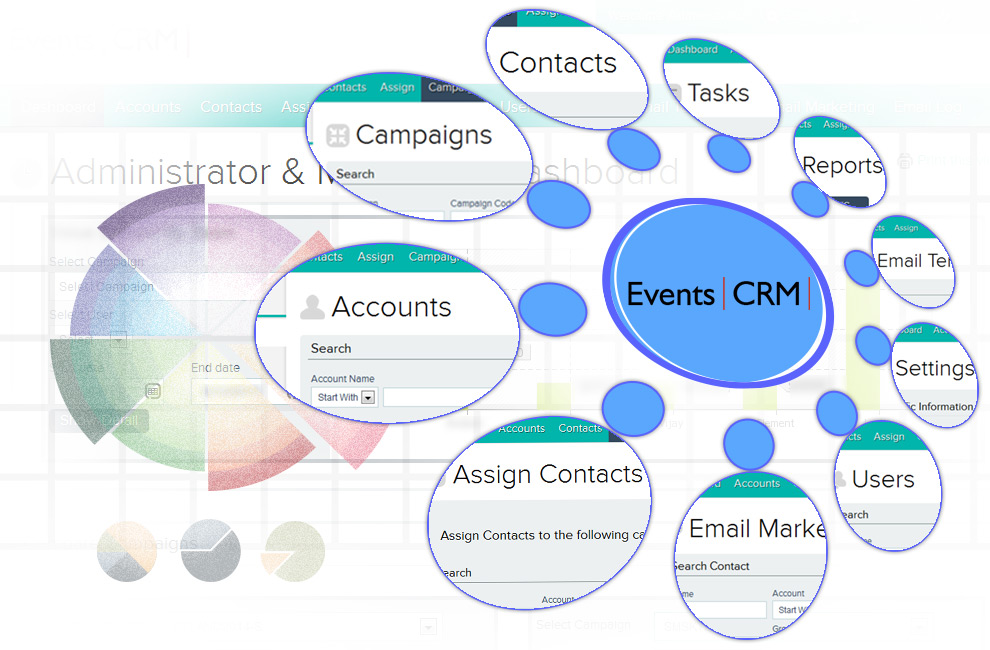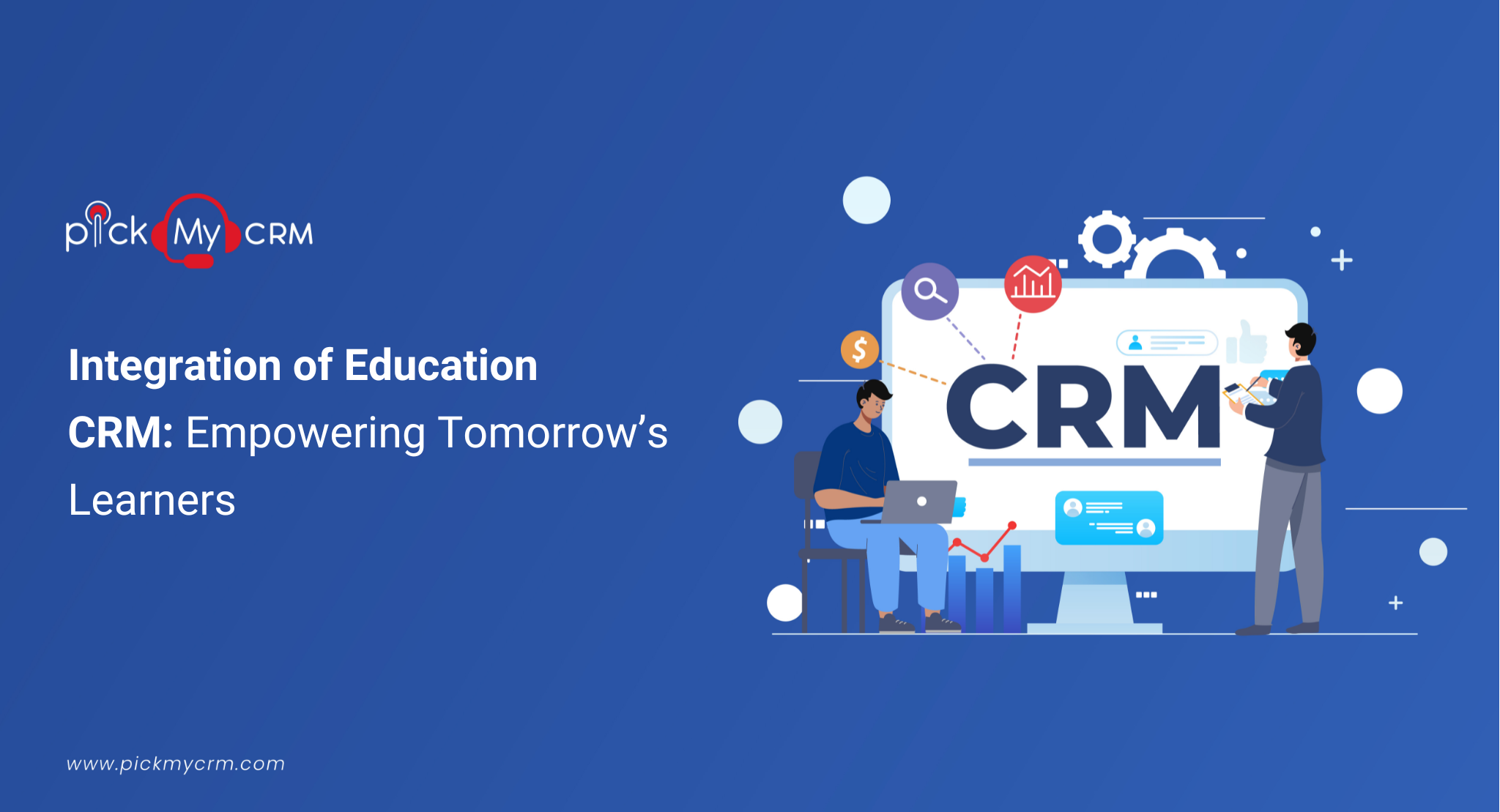Unlock Growth: The Ultimate Guide to CRM for Small Retail Businesses
Unlock Growth: The Ultimate Guide to CRM for Small Retail Businesses
Running a small retail business is a whirlwind of activity. You’re juggling inventory, managing staff, keeping the shop looking presentable, and, of course, trying to attract and retain customers. It’s a lot! In this fast-paced environment, the customer often gets lost in the shuffle. However, they are the lifeblood of your business. This is where Customer Relationship Management (CRM) software steps in – not as a burden, but as a powerful ally. This comprehensive guide will explore everything you need to know about CRM for small retail businesses, from the basics to advanced strategies, helping you transform your customer interactions and boost your bottom line.
What is CRM and Why Does Your Small Retail Business Need It?
At its core, CRM is a system that helps you manage your interactions with current and potential customers. It’s more than just a contact list; it’s a centralized hub for all customer-related information. Think of it as your business’s memory, remembering details that might otherwise slip through the cracks. For a small retail business, this can be a game-changer.
Why? Because in the retail world, relationships matter. A friendly face, personalized recommendations, and remembering a customer’s preferences can turn a one-time shopper into a loyal advocate. CRM empowers you to deliver this level of personalized service consistently. It allows you to:
- Centralize Customer Data: Store all customer information in one accessible place, including contact details, purchase history, communication logs, and preferences.
- Improve Customer Service: Access customer information instantly, enabling your staff to provide personalized and efficient service.
- Boost Sales and Marketing: Identify customer segments, tailor marketing campaigns, and track the effectiveness of your efforts.
- Increase Customer Loyalty: Foster stronger relationships through personalized interactions and proactive engagement.
- Streamline Operations: Automate tasks, such as appointment scheduling and follow-up emails, freeing up your time to focus on other aspects of your business.
Key Features of CRM Systems for Retail Businesses
Not all CRM systems are created equal. When choosing a CRM for your small retail business, look for features that cater specifically to the retail environment. Here are some essential features:
1. Contact Management
This is the foundation of any CRM. It allows you to store and organize customer contact information, including names, addresses, phone numbers, email addresses, and social media profiles. Good contact management allows you to easily segment your customers based on various criteria, such as purchase history, demographics, or interests.
2. Sales Tracking
Track sales activities, such as quotes, orders, and invoices. This provides valuable insights into your sales pipeline and helps you identify opportunities for upselling and cross-selling. This feature is crucial for understanding which products are popular and which marketing efforts are driving sales.
3. Customer Segmentation
Divide your customers into distinct groups based on shared characteristics. This allows you to tailor your marketing messages and offers to specific customer segments, increasing the likelihood of conversions. For example, you can segment customers based on their purchase history, such as those who frequently buy a particular product or those who haven’t made a purchase in a while.
4. Marketing Automation
Automate repetitive marketing tasks, such as sending out welcome emails, birthday greetings, or promotional offers. This saves you time and ensures consistent communication with your customers. This can also include automated email sequences based on customer behavior, such as abandoned cart reminders.
5. Reporting and Analytics
Generate reports on key metrics, such as sales performance, customer acquisition cost, and customer lifetime value. This data provides valuable insights into your business’s performance and helps you make informed decisions. This allows you to track the effectiveness of your marketing campaigns and identify areas for improvement.
6. Integration with Point of Sale (POS) Systems
This is a critical feature for retail businesses. Integration with your POS system allows you to automatically import customer data and sales information into your CRM. This eliminates the need for manual data entry and ensures that your CRM is always up-to-date. This provides a 360-degree view of your customers, allowing you to personalize their experience.
7. Mobile Accessibility
Access your CRM data from anywhere, anytime, using a mobile device. This is essential for retail businesses, where employees are often on the go. This allows you to provide instant customer service and stay connected with your customers, even when you’re away from your desk.
Choosing the Right CRM for Your Small Retail Business
Selecting the right CRM system is crucial for its success. Consider these factors when making your decision:
1. Your Business Needs
What are your specific goals for implementing a CRM? Are you looking to improve customer service, increase sales, or streamline your marketing efforts? Identify your needs and choose a CRM that offers the features you need to achieve your goals. Also, consider the size and complexity of your business. A small, independent shop will have different needs than a chain store.
2. Ease of Use
The CRM should be easy to learn and use. If it’s too complex, your employees may not adopt it, and you won’t see the benefits. Look for a user-friendly interface and intuitive features. Consider whether the CRM offers training and support to help you get started.
3. Scalability
Choose a CRM that can grow with your business. As your business expands, you’ll need a CRM that can handle more data and users. Ensure that the CRM offers the features and functionality you’ll need in the future. This may include the ability to integrate with other software and tools as your business evolves.
4. Integration Capabilities
The CRM should integrate with your existing systems, such as your POS system, email marketing platform, and accounting software. This will streamline your operations and eliminate the need for manual data entry. Check to see if the CRM offers pre-built integrations or an API that allows you to connect to other systems.
5. Budget
CRM systems vary in price, from free to thousands of dollars per month. Determine your budget and choose a CRM that offers the features you need at a price you can afford. Consider the total cost of ownership, including implementation, training, and ongoing support. Free CRM options can be a good starting point, but they may have limited features or support.
6. Customer Support
Choose a CRM that offers reliable customer support. You’ll need help when you have questions or encounter problems. Look for a CRM that offers multiple support channels, such as email, phone, and live chat. Read reviews to see what other users say about the CRM’s support.
Top CRM Systems for Small Retail Businesses
Several CRM systems are well-suited for small retail businesses. Here are some of the top contenders:
1. HubSpot CRM
HubSpot CRM is a popular choice for small businesses. It offers a free version with a wide range of features, including contact management, sales tracking, and marketing automation. It’s known for its user-friendly interface and extensive resources. HubSpot’s free version is a great starting point and offers powerful features for small retail businesses to manage their customer relationships effectively. The platform also offers paid plans with advanced features, such as advanced analytics and marketing automation tools.
2. Zoho CRM
Zoho CRM is a comprehensive CRM system that offers a variety of features, including sales force automation, marketing automation, and customer service management. It’s a good option for businesses that need a robust CRM solution. Zoho CRM is known for its flexibility and customization options, allowing businesses to tailor the platform to their specific needs. It offers various pricing plans to accommodate businesses of different sizes and budgets. The platform’s integration capabilities with other Zoho apps and third-party applications make it a powerful tool for small retail businesses looking to streamline their operations.
3. Freshsales
Freshsales is a sales-focused CRM system that offers features such as lead management, sales tracking, and email integration. It’s a good option for businesses that want to improve their sales process. Freshsales offers a user-friendly interface and is known for its ease of use. It also provides features like sales forecasting and reporting to help businesses track their sales performance. With its focus on sales, Freshsales can be a valuable tool for small retail businesses looking to increase their sales and improve their customer interactions.
4. Pipedrive
Pipedrive is a sales CRM designed to help small businesses manage their sales pipeline. It offers a visual interface that makes it easy to track deals and manage customer interactions. Pipedrive’s focus on sales makes it ideal for retail businesses that want to improve their sales process and convert leads into customers. It offers features like deal tracking, sales automation, and reporting to help businesses manage their sales pipeline effectively.
5. Agile CRM
Agile CRM is an all-in-one CRM system that offers features for sales, marketing, and customer service. It’s a good option for businesses that want a comprehensive CRM solution. Agile CRM offers a user-friendly interface and is known for its affordability. It also provides features like email marketing, social media integration, and help desk support to help businesses manage their customer relationships effectively.
Implementing CRM: A Step-by-Step Guide for Your Retail Business
Implementing a CRM system can seem daunting, but with a strategic approach, you can ensure a smooth transition and maximize its benefits. Here’s a step-by-step guide:
1. Define Your Goals
Before you start, clearly define your goals for implementing a CRM. What do you want to achieve? Are you looking to improve customer service, increase sales, or streamline your marketing efforts? Having clear goals will help you choose the right CRM and measure its success. Set specific, measurable, achievable, relevant, and time-bound (SMART) goals to ensure you’re on the right track.
2. Choose Your CRM
Based on your goals and needs, select the CRM system that best fits your business. Consider the factors discussed earlier, such as ease of use, features, scalability, and budget. Research different CRM options and compare their features and pricing to find the best fit for your business. Take advantage of free trials or demos to test out the CRM before making a commitment.
3. Prepare Your Data
Clean up your existing customer data. This includes removing duplicate entries, correcting errors, and ensuring that your data is up-to-date. This will ensure that your CRM is accurate and reliable. Determine what customer data you want to import into your CRM. This might include contact information, purchase history, and communication logs. Prepare your data in a format that can be easily imported into your CRM. This may involve exporting your data from existing spreadsheets or databases.
4. Customize Your CRM
Configure your CRM to meet your specific business needs. This includes setting up user roles, creating custom fields, and configuring workflows. Tailor the CRM to reflect your business processes and workflow. Set up custom fields to capture information that is unique to your business. Configure automated workflows to streamline your tasks. This will ensure that the CRM works the way you want it to.
5. Train Your Team
Provide training to your employees on how to use the CRM. This will ensure that they understand how to use the system and can effectively manage customer interactions. Provide training materials and resources to help your employees learn the CRM. Offer hands-on training sessions and provide ongoing support. Encourage your employees to embrace the CRM and use it consistently. This will maximize the benefits of the CRM and improve customer relationships.
6. Integrate with Other Systems
Integrate your CRM with your other systems, such as your POS system, email marketing platform, and accounting software. This will eliminate the need for manual data entry and ensure that your data is synchronized across all your systems. This will streamline your operations and improve efficiency. Integrate the CRM with your POS system to automatically import customer data and sales information.
7. Migrate Your Data
Import your customer data into your CRM. This process will involve transferring your customer data from existing spreadsheets or databases. Ensure that your data is accurate and properly formatted. Test the import process to ensure that your data is imported correctly. Review and verify the imported data. This will ensure that your CRM is populated with accurate customer data.
8. Start Using the CRM and Monitor Performance
Start using the CRM and track your progress. Monitor key metrics, such as sales performance, customer acquisition cost, and customer satisfaction. This will help you identify areas for improvement and measure the success of your CRM implementation. Encourage your employees to use the CRM consistently and actively. Track your progress and make adjustments as needed. This will ensure that you’re getting the most out of your CRM and achieving your goals.
9. Ongoing Maintenance and Optimization
Regularly review and update your CRM data. Ensure that your customer data is accurate and up-to-date. This will ensure that your CRM is reliable and provides valuable insights. Regularly review and optimize your CRM configuration. Make adjustments as needed to improve efficiency and effectiveness. Provide ongoing training and support to your employees to ensure that they are using the CRM effectively. This will help you maintain a high-performing CRM system.
Maximizing the Benefits of CRM in Your Retail Business
Once your CRM is up and running, you can implement strategies to maximize its benefits and drive growth for your retail business. Here are some key strategies:
1. Personalize Customer Interactions
Use the data in your CRM to personalize your interactions with customers. This includes sending personalized emails, making personalized product recommendations, and providing personalized customer service. Tailor your communication to reflect each customer’s preferences and interests. Use customer data to create personalized product recommendations. Provide personalized customer service by addressing customers by name and remembering their past interactions. This will help you create a stronger connection with your customers and build loyalty.
2. Implement Targeted Marketing Campaigns
Use customer segmentation to create targeted marketing campaigns. This involves dividing your customers into distinct groups based on their shared characteristics. Tailor your marketing messages and offers to specific customer segments. This will increase the likelihood of conversions and improve your return on investment. Develop targeted email campaigns based on customer behavior and preferences. Create targeted social media campaigns to reach specific customer segments. Track the performance of your campaigns and make adjustments as needed. This will help you reach the right customers with the right message.
3. Provide Exceptional Customer Service
Use your CRM to provide exceptional customer service. This includes providing quick and efficient responses to customer inquiries, resolving customer issues promptly, and exceeding customer expectations. Empower your employees to provide exceptional customer service by providing them with the tools and information they need. Respond to customer inquiries quickly and efficiently. Resolve customer issues promptly and effectively. Exceed customer expectations by going the extra mile. This will help you build a positive reputation and increase customer loyalty.
4. Leverage Automation to Save Time
Use marketing automation to streamline your marketing efforts. This includes automating email marketing campaigns, sending personalized welcome emails, and sending automated follow-up emails. Automate repetitive tasks, such as appointment scheduling and invoice generation. This will free up your time to focus on other aspects of your business. Automate your email marketing campaigns to save time and improve efficiency. Set up automated workflows to streamline your tasks. This will help you save time and improve your productivity.
5. Analyze Data and Make Informed Decisions
Use your CRM to analyze your data and make informed decisions. This includes tracking key metrics, such as sales performance, customer acquisition cost, and customer lifetime value. Use your data to identify trends and patterns. Make data-driven decisions to improve your business performance. Use the data to identify areas for improvement. Track the performance of your marketing campaigns and make adjustments as needed. This will help you make informed decisions and drive growth for your business.
Common Challenges and How to Overcome Them
While CRM offers numerous benefits, it’s essential to be aware of potential challenges and how to address them:
1. Employee Resistance
Some employees may resist using the new CRM system. This is because they may be unfamiliar with the system or they may be resistant to change. To overcome this challenge, provide adequate training and support. Demonstrate the benefits of the CRM and how it will make their jobs easier. Involve employees in the implementation process and solicit their feedback. This will help you gain their buy-in and ensure that they use the CRM effectively.
2. Data Accuracy
Inaccurate data can undermine the effectiveness of your CRM. This is because inaccurate data can lead to incorrect decisions and a poor customer experience. To ensure data accuracy, implement data validation rules. Regularly review and update your data. Provide training to your employees on how to enter data accurately. This will help you maintain accurate data and ensure that your CRM provides valuable insights.
3. Integration Issues
Integrating your CRM with other systems can be complex. This is because different systems may use different data formats and protocols. To address this challenge, choose a CRM that offers seamless integration with your existing systems. Work with a qualified IT professional to ensure a smooth integration process. Test the integration thoroughly to identify and resolve any issues. This will ensure that your systems work together seamlessly and that your data is synchronized across all your systems.
4. Lack of Adoption
If employees don’t use the CRM, you won’t see the benefits. This is often due to a lack of training, a lack of understanding of the CRM’s benefits, or a lack of time. To encourage adoption, provide ongoing training and support. Demonstrate the value of the CRM and how it will help them. Make the CRM easy to use and accessible. Track employee usage and provide feedback. This will help you ensure that your employees are using the CRM effectively and that you are getting the most out of your investment.
5. Cost Concerns
CRM systems can be expensive, especially for small businesses. To address this concern, choose a CRM that fits your budget. Consider free or low-cost options. Negotiate pricing with CRM vendors. Evaluate the return on investment (ROI) of your CRM. This will help you ensure that you are getting the most value for your money.
The Future of CRM in Retail: Trends to Watch
The CRM landscape is constantly evolving. Here are some trends to watch for in the future of CRM for retail businesses:
1. Artificial Intelligence (AI) and Machine Learning (ML)
AI and ML are already transforming CRM. They are being used to automate tasks, personalize customer interactions, and provide deeper insights into customer behavior. Expect to see more AI-powered features in CRM systems, such as chatbots, predictive analytics, and personalized recommendations. AI-powered chatbots can provide instant customer support and answer frequently asked questions. Predictive analytics can help you forecast sales and identify customer churn risk. Personalized recommendations can help you increase sales and improve customer satisfaction.
2. Omnichannel CRM
Customers are interacting with businesses across multiple channels, including online, in-store, and through social media. Omnichannel CRM integrates these channels to provide a seamless customer experience. This allows businesses to track customer interactions across all channels and provide consistent service. With omnichannel CRM, you can provide a consistent brand experience across all channels. Customers can interact with your business on their preferred channels. You can track customer interactions across all channels and provide personalized service.
3. Mobile CRM
Mobile CRM allows employees to access CRM data and manage customer interactions from anywhere, anytime. This is especially important for retail businesses, where employees are often on the go. Mobile CRM empowers employees to provide instant customer service and stay connected with customers. Mobile CRM apps provide access to customer data, sales information, and other relevant information. With mobile CRM, employees can update customer records, respond to customer inquiries, and close deals on the go.
4. Social CRM
Social CRM integrates social media data into your CRM system. This allows you to track customer conversations, monitor brand mentions, and engage with customers on social media. Social CRM allows you to listen to customer feedback and improve your customer service. You can engage with customers on social media and build relationships. Social CRM helps you understand customer sentiment and identify opportunities for improvement.
5. Increased Personalization
Customers expect personalized experiences. CRM systems are evolving to provide more personalized interactions, such as personalized product recommendations, targeted marketing campaigns, and personalized customer service. CRM systems are using customer data to tailor their interactions with customers. Businesses can create personalized product recommendations based on customer preferences and purchase history. Targeted marketing campaigns are sent to specific customer segments with personalized offers. This leads to increased customer satisfaction and loyalty.
Conclusion: Embrace CRM for Retail Success
Implementing a CRM system is a strategic investment that can transform your small retail business. By centralizing customer data, improving customer service, boosting sales and marketing efforts, and fostering customer loyalty, CRM empowers you to thrive in a competitive market. Remember to choose the right CRM for your needs, implement it strategically, and continuously optimize your efforts to maximize its benefits. Embrace the future of CRM and unlock the full potential of your retail business. The journey to a more customer-centric and successful retail enterprise starts with a well-chosen and effectively utilized CRM system.




